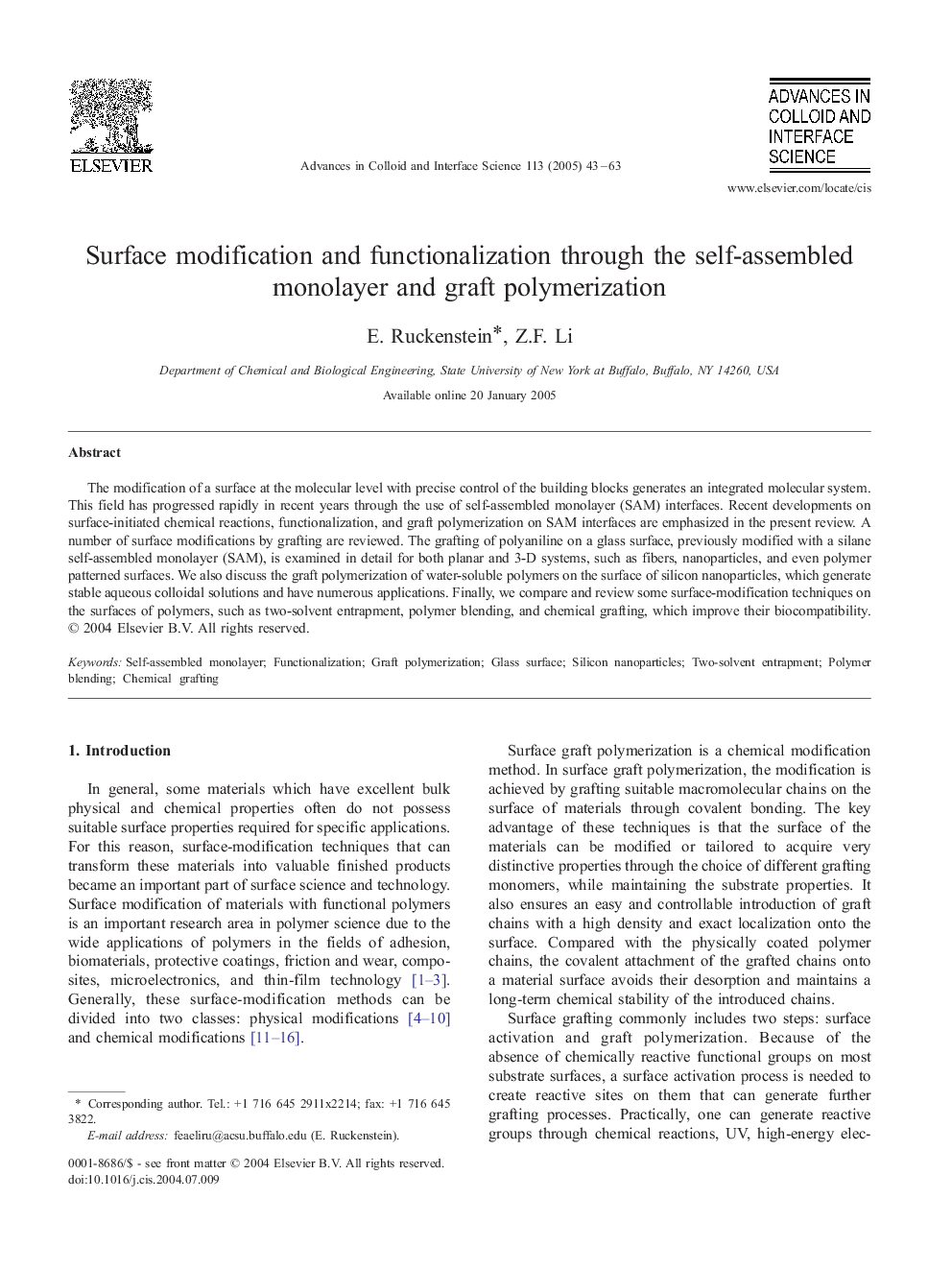| Article ID | Journal | Published Year | Pages | File Type |
|---|---|---|---|---|
| 10374532 | Advances in Colloid and Interface Science | 2005 | 21 Pages |
Abstract
The modification of a surface at the molecular level with precise control of the building blocks generates an integrated molecular system. This field has progressed rapidly in recent years through the use of self-assembled monolayer (SAM) interfaces. Recent developments on surface-initiated chemical reactions, functionalization, and graft polymerization on SAM interfaces are emphasized in the present review. A number of surface modifications by grafting are reviewed. The grafting of polyaniline on a glass surface, previously modified with a silane self-assembled monolayer (SAM), is examined in detail for both planar and 3-D systems, such as fibers, nanoparticles, and even polymer patterned surfaces. We also discuss the graft polymerization of water-soluble polymers on the surface of silicon nanoparticles, which generate stable aqueous colloidal solutions and have numerous applications. Finally, we compare and review some surface-modification techniques on the surfaces of polymers, such as two-solvent entrapment, polymer blending, and chemical grafting, which improve their biocompatibility.
Keywords
Related Topics
Physical Sciences and Engineering
Chemical Engineering
Colloid and Surface Chemistry
Authors
E. Ruckenstein, Z.F. Li,
